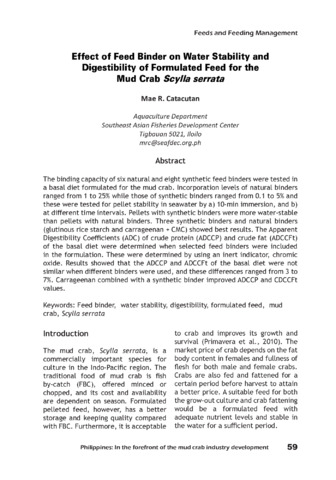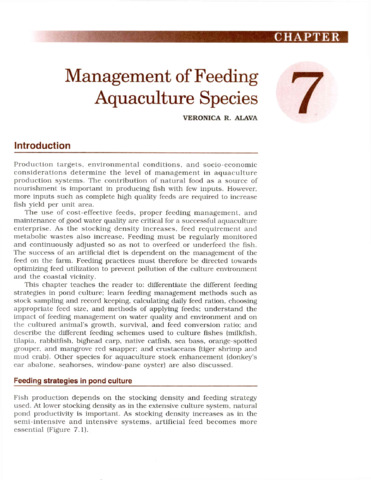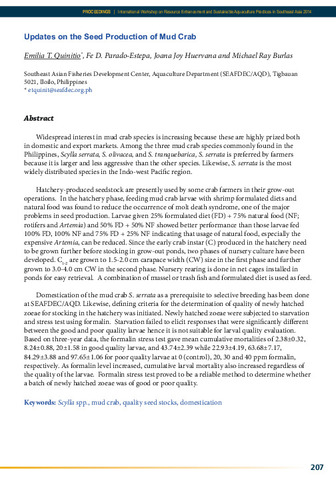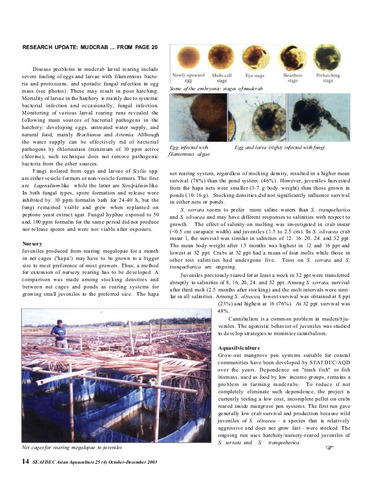Effect of feed binder on water stability and digestibility of formulated feed for the mud crab Scylla serrata
Share
ບົດຄັດຫຍໍ້
The binding capacity of six natural and eight synthetic feed binders were tested in a basal diet formulated for the mud crab. Incorporation levels of natural binders ranged from 1 to 25% while those of synthetic binders ranged from 0.1 to 5% and these were tested for pellet stability in seawater by a) 10-min immersion, and b) at different time intervals. Pellets with synthetic binders were more water-stable than pellets with natural binders. Three synthetic binders and natural binders (glutinous rice starch and carrageenan + CMC) showed best results. The Apparent Digestibility Coefficients (ADC) of crude protein (ADCCP) and crude fat (ADCCFt) of the basal diet were determined when selected feed binders were included in the formulation. These were determined by using an inert indicator, chromic oxide. Results showed that the ADCCP and ADCCFt of the basal diet were not similar when different binders were used, and these differences ranged from 3 to 7%. Carrageenan combined with a synthetic binder improved ADCCP and CDCCFt values.
Suggested Citation
Catacutan, M. R. (2017). Effect of feed binder on water stability and digestibility of formulated feed for the mud crab Scylla serrata. In E. T. Quinitio, F. D. Parado-Estepa, & R. M. Coloso (Eds.), Philippines : In the forefront of the mud crab industry development : proceedings of the 1st National Mud Crab Congress, 16-18 November 2015, Iloilo City, Philippines (pp. 59-68). Tigbauan, Iloilo, Philippines: Aquaculture Department, Southeast Asian Fisheries Development Center.
ວິຊາ
Taxonomic term
Related items
Showing items related by title, author, creator and subject.
-
Management of feeding aquaculture species
Alava, Veronica R. (Aquaculture Department, Southeast Asian Fisheries Development Center, 2002)This chapter teaches the reader to: differentiate the different feeding strategies in pond culture; learn feeding management methods such as stock sampling and record keeping, calculating daily feed ration, choosing ... -
Updates on the seed production of mud crab
Quinitio, Emilia T.; Parado-Estepa, Fe D.; Huervana, Joana Joy; Burlas, Michael Ray (Aquaculture Department, Southeast Asian Fisheries Development Center, 2015)Widespread interest in mud crab species is increasing because these are highly prized both in domestic and export markets. Among the three mud crab species commonly found in the Philippines, Scylla serrata, S. olivacea, ... -
European Union's special project on mudcrab
Castaños, Milagros T.; Southeast Asian Fisheries Development Center, Aquaculture Department (Aquaculture Department, Southeast Asian Fisheries Development Center, 2003)




